Learn everything you need to know about caring for a rabbit including basic bunny information, feeding guide, husbandry, and veterinary care.
Rabbits make wonderful pets! They are generally friendly, curious and cuddly creatures that will quickly become part of the family. Unfortunately, there is a lot of misinformation about the care of rabbits available, and the wrong advice can lead to a range of problems.
We hope that you will find this care sheet informative and enlightening and hope that you can take away a few tips to keep your rabbit as healthy and happy for as long as possible.
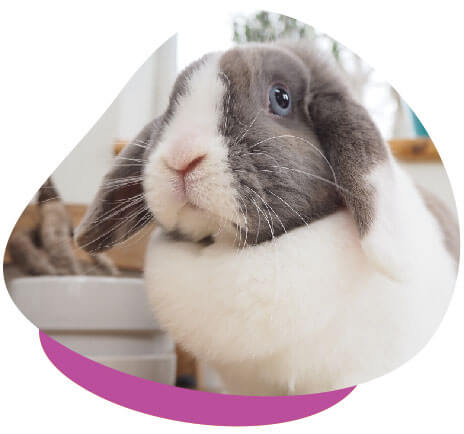
Bunny Background Information
Rabbits generally live for an average of 6-10 years. They are found in most countries around the world and are considered to be agricultural pests in many parts of the world, including Queensland, without appropriate licensing.
There is a variety of popular domestic rabbit breeds that make great family pets in Australia. The most popular breeds are the Dwarf Lop, Mini Lop, Netherland Dwarf as well as mixed breed rabbits.
Each breed has different characteristics, grooming and care requirements so we recommend that you do some research before welcoming a bunny into your family. They also range greatly in size with their average adult body weight varying between 1-8kg!
Contrary to belief, rabbits are not rodents; instead, they come from the order Lagomorpha and are more commonly known as lagomorphs.
When Do Rabbits Become Sexually Mature?
Rabbits will start to become sexually active from around 3 months of age. Female rabbits (does) do not have a set oestrous cycle; instead they undergo a process called induced ovulation, in which the act of mating will bring on ovulation in a doe.
An average rabbit litter size is between 4-12 babies and the average gestation period of a rabbit is between 28-32 days. Baby rabbits (kits or kittens) are born furless, with their eyes closed and will live in a nest made by the mother for about 3 weeks. Rabbit kittens should generally be fully weaned once they reach approximately 6 weeks of age.
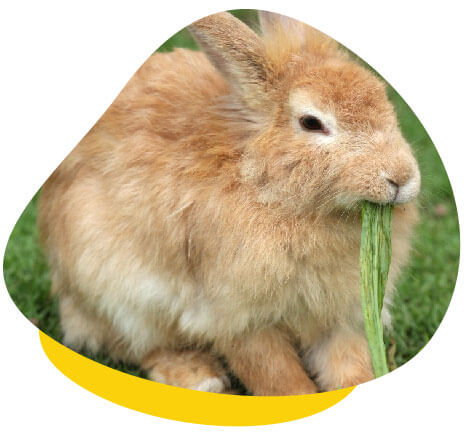
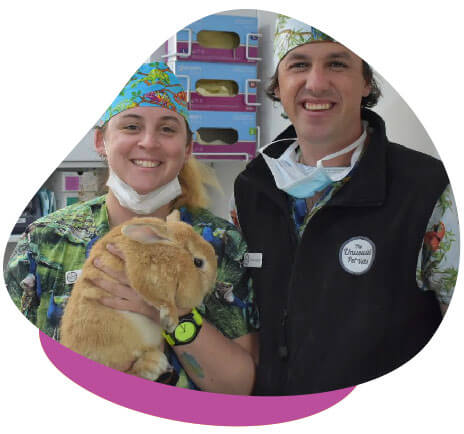
Choosing a Healthy Rabbit
When looking to welcome a rabbit into your family, it is necessary to make sure that you are purchasing your rabbit from a reputable source whether that be from a breeder, rescue organisation or pet store.
It is important to note the environment that they are living in. Their hutches or runs should be kept in an appropriate area, and they should be clean, dry and not overcrowded. There should be appropriate food and clean, fresh water readily available.
Regardless of where you choose to purchase your rabbit from, it is vital that you perform a basic exam of the rabbit before agreeing to buy.
A healthy rabbit should be active, inquisitive but wary, have clear, bright eyes, a healthy clean coat with no patches of missing fur, pink and moist gums, clean and even teeth, clean feet without sores and have well-formed faeces.
It can require some skill to identify the sex of a young rabbit correctly. Therefore, we recommend buying from someone that has experience in determining the sex of young rabbits. If any problems are identified, it may be best to consider having a rabbit vet check-up before purchasing your rabbit.
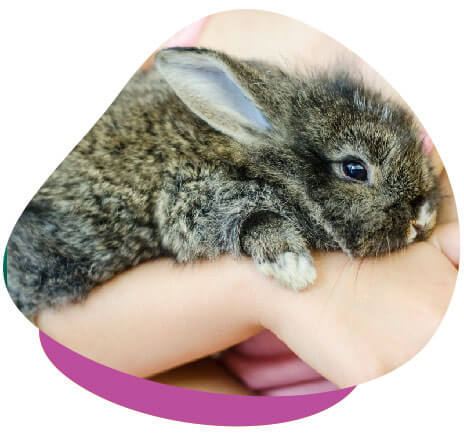
Bunny Behaviour
Rabbits are considered to be social animals and benefit from having a companion rabbit. There is little difference between bucks and does as pets; however, it is important to keep in mind that two adults who are unfamiliar to each other will tend to fight one another if introduced suddenly. Desexing your pet rabbit will help to decrease the risk of any fighting or aggression.
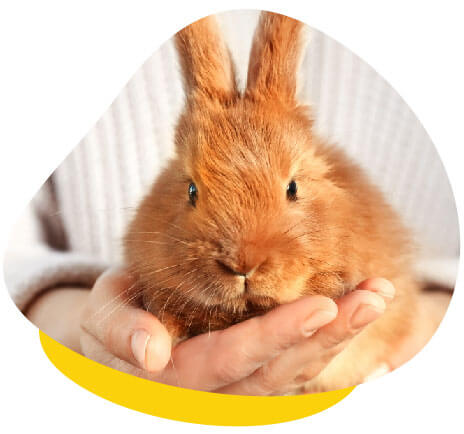
Rabbit Husbandry
Good husbandry is very important with rabbits, with many diseases being preventable with adequate care. Rabbits do well in a hutch or playpen that is either inside or outside in an undercover area that is free from direct sunlight, rain and windy drafts. If your rabbit is outside, they will need to have insect protection (netting or flyscreen) to prevent mosquitoes and flies from getting in (more on this below).
We recommend that each rabbit be provided with an absolute minimum floor space of approximately 1.5m x 1.5m, however, the more room, the better. Newspaper can be used to line the bottom of the hutch, with a bedding substrate such as oaten hay on top of the newspaper. Bedding should be changed daily, or more frequently if it becomes soiled. This will prevent the cage from becoming too dirty and smelly.
Ammonia is produced in rabbit urine, and rabbits are sensitive to high ammonia levels in the air. Keeping their run clean and tidy helps to keep ammonia levels down and avoid potential problems.
Tip: Waste from the hutch makes great compost for the garden.
Outdoor Living
If living outdoors, you need to consider if your rabbit is protected from mosquitos and other insects. Mosquitos can carry the rabbit calicivirus and myxomatosis viruses and can potentially infect your pet rabbit.
Vaccination is available and recommended for both the RHDV1 and the RHDV2 strain of calicivirus, however, currently there is no vaccine available in Australia for the rabbit myxomatosis virus. For this reason, we recommend all outdoor hutches be fitted with a fly screen to prevent mosquitos from entering your pet rabbit’s hutch.
Rabbits are sensitive to the heat and may experience heat exhaustion when temperatures are in excess of 28°C, they are suddenly exposed to wide temperature changes, or they are forced to be in direct sunlight. In some cases, heat exhaustion can be very severe and can lead to death.
It is imperative to keep your pet rabbit cool on hot days, especially if they are living outside the house. Make sure to provide plenty of water and vegetables on hot days and ensure that the hutch is not in full sun and has plenty of shade throughout the day. Frozen water bottles can be provided as a cool object for your rabbit to lay against on a hot day.
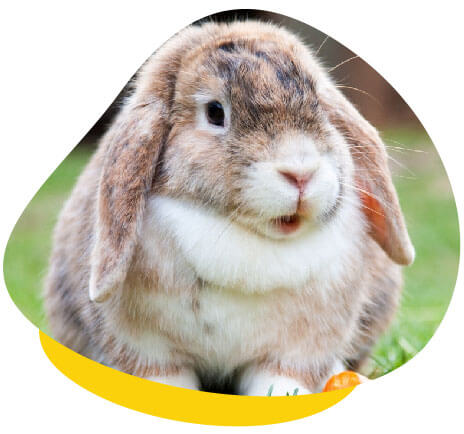
Feeding Pet Rabbits
Feeding your rabbit and guinea pig the right foods is important for a range of things including healthy teeth and gastrointestinal health. Many of the problems we see in rabbits and guinea pigs are caused by feeding a poor diet, for this reason it is crucial that you ensure your pet is being fed appropriately.
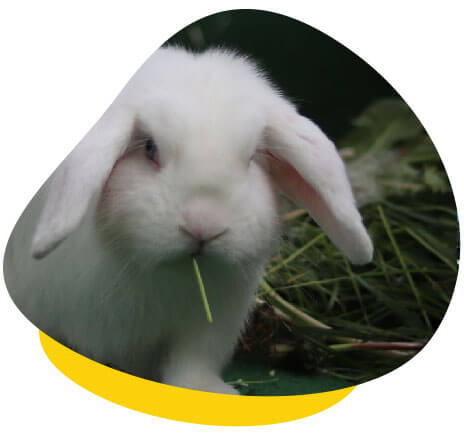
What Does a Good Quality Diet Include?
A good guinea pig and rabbit diet will be high in fibre with moderate protein levels as well as provide some fats, carbohydrates, vitamins and minerals. This can be achieved by providing your rabbit with ad lib good quality grass or grass hay (such as oaten or timothy hay). This should make up 70-80% of your rabbits’ diet.
A small amount of a good pellet mix (around a tablespoon per day) can also be fed and a range of fresh leafy green vegetables and herbs should make up the rest of the diet. Fresh vegetables and herbs that are appropriate to feed include but are not limited to Asian greens, watercress, cabbage, broccoli, carrot tops, celery leaves, silver beat, parsley, mint and basil. Fruits should be used as treat items only.
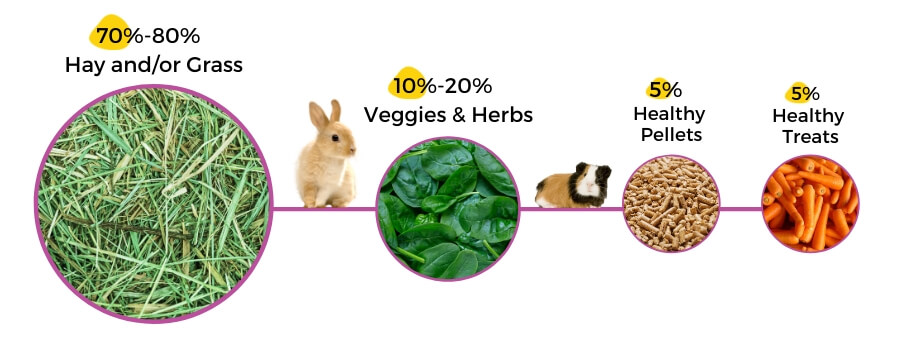
What Food Should Never Be Fed to a Rabbit or Guinea Pig?
Foods you should never feed your rabbit include but are not limited to iceberg lettuce, onion, garlic, potato, meat, tomato plants, rhubarb and jalapenos.
Fresh Water
It is important that your pet rabbit has clean fresh water on offer at all times. This can be provided easily with a dripper bottle attached to the cage or a heavy bowl (so that they cannot knock it over). Many rabbits actually prefer bowls to drink from rather than dripper bottles.
Listed here is a general guide as to what to feed your pet, for more specific information and a tailored dietary plan for your pet please get in touch with us.
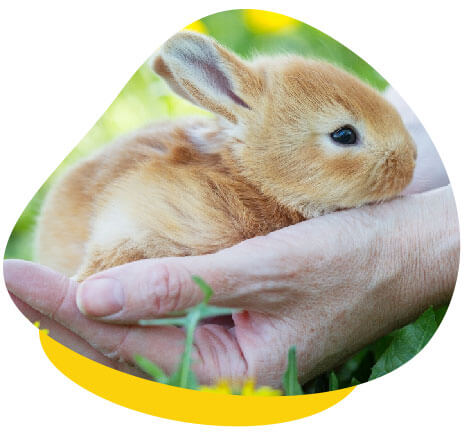
| EVERYDAY | TREATS | NEVER |
| Fresh hay and/or grass* | Fresh Fruit** – only one small slice | Seeds, bread, oats, high grain mixes or high starch foods |
| Pellets – as a general rule 1 tablespoon per animal per day | Lucerne Hay – small handful | Iceberg Lettuce, Potatoes, Onions, Garlic, Corn Kernels |
| Green leafy vegetables (as well as those high in vitamin C for Guinea Pigs***) and herbs | Hibiscus Flowers, Fennel, Carrots, Almonds (1-2), Sultanas (up to 5), Cranberries (up to 5) and rose petals (fresh or dried) | |
| Commercially available healthy treats |
Asterix Reference Guide
* Oaten Hay, Timothy Hay, Orchard Grass, Botanical Hay – 80% of the animal’s diet. Lucerne hay is also okay for growing animals. A litter tray sized amount of fresh hay per rabbit and per 2 guinea pigs should be provided per day.
** Such as Apple, Banana, Pear, Strawberries
*** Such as Parsley, Red Capsicum, Kale, Broccoli
Feel free to get in touch with us for more information on feeding or transitioning your rabbit or guinea pig onto an optimal and nutritious diet.
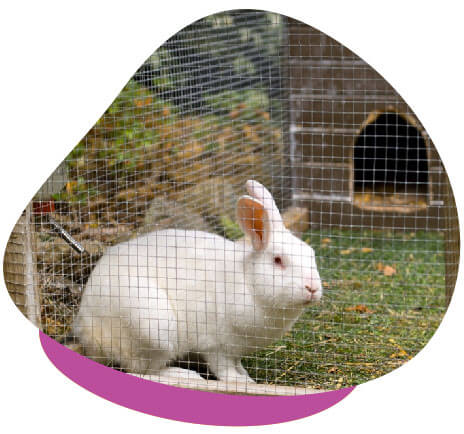
What Do I Need to Take My Rabbit to the Vet for?
Rabbits require regular veterinary care and check-ups. The following is a summary of what we recommend.
Vaccination
There are a number of viruses in Australia that can harm your rabbit. With the recent introduction of a new and improved vaccine (Filavac®) in Australia, we can now protect rabbits from both the RHDV1 strain and the RHDV2 strain of calicivirus. To prevent your rabbit contracting the potentially deadly calicivirus, it is important that your rabbit receives regular vaccinations.
The vaccination can be given to rabbits over 10 weeks of age, with an annual booster required to keep the protection up to date. It can be administered at the same time as their health check-up and all our vaccinations include a full health check.
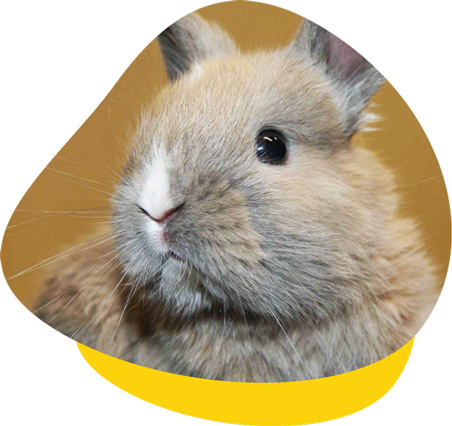
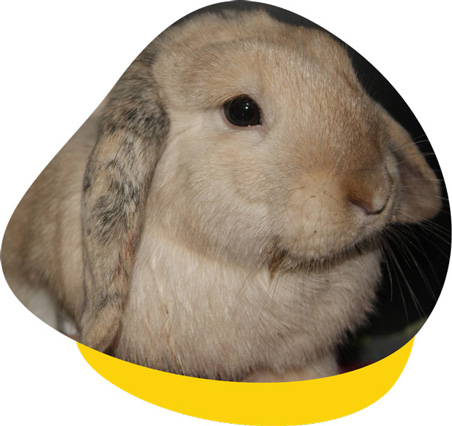
Sterilisation (Desexing)
We strongly recommend having your rabbit desexed for the following reasons:
- Prevents the development of uterine cancer, a very common reproductive disease in female rabbits.
- Reducing the risk of fights occurring if you have more than one rabbit
- Decreasing aggression
- Decreasing urine spraying and unwanted reproductive behaviour (humping etc.)
- Prevents unwanted pregnancies
Unfortunately, even with the best care problems can still occur and if you are at all concerned about your rabbit’s health or behaviour, please contact us. Keeping a watchful eye on your rabbit and learning to identify signs of illness or out of the ordinary behaviour is essential for their health and happiness.
Bi-annual Health Check
We recommend bi-annual health checks for rabbits. At this time, your rabbit will receive a thorough examination to help identify any problems that are occurring. Your rabbit’s teeth will also be checked at this point and advice on prevention of dental disease can be discussed.
Things to watch out for include but are not limited to the following:
| Lethargy | Scratching excessively |
| Diarrhoea | Staining around the mouth |
| Weak hind legs | Weight loss |
| Hair loss | Dietary preference change |
| Not eating or drinking | Discharge from eyes and/or nostrils |
| Dull eye colour or coat | Lump and bumps |
| Dirty or overgrown teeth | Abnormal urine colour |
Rabbits make wonderful companions, and by following the above advice, you can help to reduce the chances of common problems occurring and ensure that your rabbit is receiving the care that it deserves.

